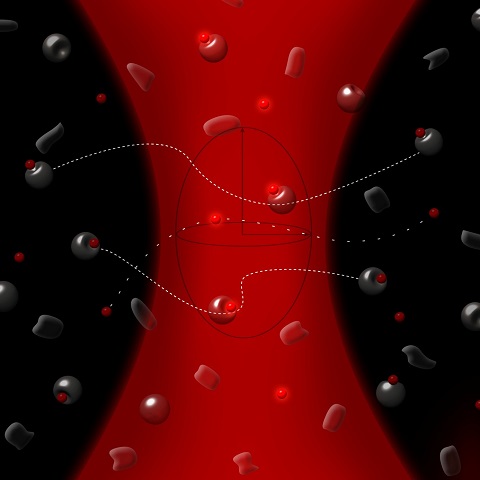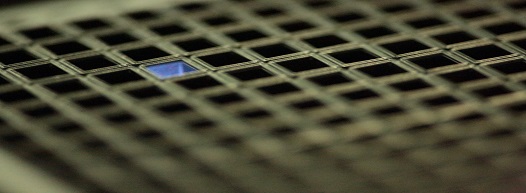Fluorescence correlation spectroscopy (FCS)
FCS monitors and analyzes the stochastic movement of fluorescently labeled molecules in an open microscopic volume element irradiated by a focused laser beam. A key prerequisite for FCS measurements is a sufficiently small detection volume. By focusing a laser beam to a diffraction limited spot in combination with confocal optics the detection volume is confined to an element of 0.25 femtoliter, which corresponds to less than half the size of an E. coli bacterium. Fluorescence correlation spectroscopy (FCS) A combination of focused laser beam and confocal optics define a microscopic detection volume (drawn in as black spheroid). Fluorescent molecules diffusing in and out of the illuminated spot emit photons recorded on single photon sensitive detectors. Small particles with higher diffusional speed can be distinguished from large, slow particles by correlation analysis of the recorded photon count trace. Brownian motion drives the diffusion of fluorescence-labeled molecules through the illuminated detection volume. The photons emitted while passing through the volume element are recorded on ultra-sensitive avalanche photo detectors (APD). The fluctuations are analyzed by treating the recorded photon counts with a mathematical method called autocorrelation and fitting the deduced autocorrelation function to an appropriate biophysical model. In general, all physical parameters giving rise to fluctuations in the fluorescence signals are accessible by FCS. Parameters as concentration, diffusion coefficients and molecular weight can be determined directly from the measurement. Additionally, subpopulations of labeled particles can be told apart. |

